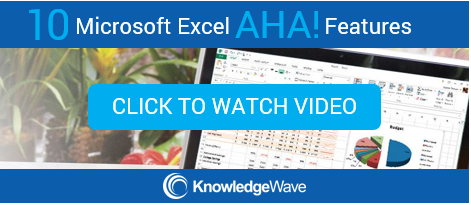 For today's overworked business environment, there is an increased room for error when it comes to maintaining accurate data. Fortunately, there are tools and techniques for managing data integrity in Microsoft Excel, keeping business users and employees efficient, compliant and happy. Let's take a look at four time-saving tips that will make your daily tasks more manageable.
For today's overworked business environment, there is an increased room for error when it comes to maintaining accurate data. Fortunately, there are tools and techniques for managing data integrity in Microsoft Excel, keeping business users and employees efficient, compliant and happy. Let's take a look at four time-saving tips that will make your daily tasks more manageable.
Four ways of using Microsoft Excel to maximize your business's data integrity
Use AGGREGATE functions
Every time data is manually manipulated, there's a chance for human error. By using the mathematical, organizational and referential functions in Excel you're automating much of the process and minimizing your risk. With this video you can learn how to use some of the AGGREGATE function's 19 calculations and options to exclude hidden rows, filtered rows, and cell errors.
Try PowerPivot
Add-ins such as PowerPivot can bring self-service business intelligence to your desktop. Known for performing powerful data analysis, it can process massive amounts of your data and display meaningful information in seconds, empowering you to make more informed, timely business decisions. With PowerPivot you can also integrate data from multiple sources and have them relate to each other, as well as benefit from a dashboard view that makes important data easy to interact with. PowerPivot can also help minimize the chance for human error, since you won't be able to edit the data unless it's edited in the source document. Perhaps most importantly, it alleviates the need for a revolving IT door, freeing up the department's time to focus on others areas of the organization—ultimately creating more efficiency and driving more return on your investment across your business landscape.
Identify outliers to cross-check your work
Excel's built-in functionality can help identify outliers, which is important in scenarios such as financial reporting or reporting on large data sets. Excel will catch numbers that stray from the mean, so you can cross-check your data points to ensure accuracy without having to manually scan for these potential errors.
Compliance issues
"Compounding the data integrity problems is the simple fact that although people find time to manipulate data with their spreadsheets, they hardly ever find time to document what they do," writes Rick Serhman in contribution to TechTarget. Take HR, accounting, finance, marketing and sales, among other departments. These professionals are collecting and storing vast amounts of data on a daily basis. Without tracking how the data is manipulated, the company could be facing huge audit costs or regulatory fines. To help, use Excel in a cloud solution such as Office 365. By using one centralized system of truth, you won't risk writing over your colleagues or saving different versions of the same document, thus maintaining a clearer audit trail.
Want to learn more Tips and Tricks? Check out the video that has over 1 million downloads "10 Micorosoft Excel AHA! Features!"







